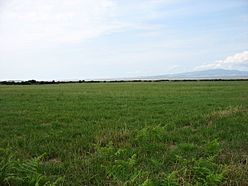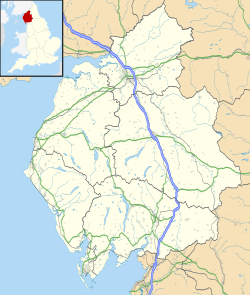Milefortlet 4 facts for kids
Quick facts for kids Milefortlet 4 |
|
|---|---|

Fields by the Solway Firth, and the approximate site of Milefortlet 4
|
|
| Type | Milecastle |
| Place in the Roman world | |
| Province | Britannia |
| Location | |
| Coordinates | 54°55′35″N 3°17′21″W / 54.926352°N 3.289258°W |
| County | Cumbria |
| Country | England |
Milefortlet 4 (Herd Hill) was a small fort built by the Romans along the coast of Cumbria, England. It was part of a defence system that stretched from the end of Hadrian's Wall. This system included many small forts called milefortlets and stone watchtowers. They were all connected by a wooden fence. These coastal defences were built around the same time as Hadrian's Wall. Today, you can't see much of Milefortlet 4 on the ground. However, archaeologists have found its exact location.
Contents
Finding Milefortlet 4
Milefortlet 4 is located near the sea, on a low hill called Herd Hill. This spot is just north of a small village named Cardurnock in Bowness.
Archaeologists first found signs of the fort in 1945. They noticed old turf structures on Herd Hill. Later, in 1994, a special survey was done. This was a geophysical survey, which uses tools to "see" what's buried underground without digging. This survey helped pinpoint the milefortlet's exact position.
Towers That Helped Guard Milefortlet 4
Each milefortlet had two smaller towers nearby. These towers were built in a similar way to the turrets found along Hadrian's Wall. They were placed about one-third and two-thirds of a Roman mile to the west of the main fort. Soldiers from the milefortlet would have also guarded these towers. The towers linked to Milefortlet 4 are known as Tower 4A and Tower 4B.
Tower 4A: Where Was It?
The exact spot of Tower 4A is not fully known. However, experts believe it was on top of a ridge. This location would have given it great views out to sea.
Tower 4B: What We Know
Tower 4B is located in a field west of Cardurnock. Archaeologists dug there in 1977. They found parts of three sides of the tower. The western side had been washed away by the sea over time.
The archaeologists learned that the tower was built in three stages. In the first two stages, there were wooden fence structures. But in the third stage, these wooden structures were replaced. A strong stone tower was built instead.


